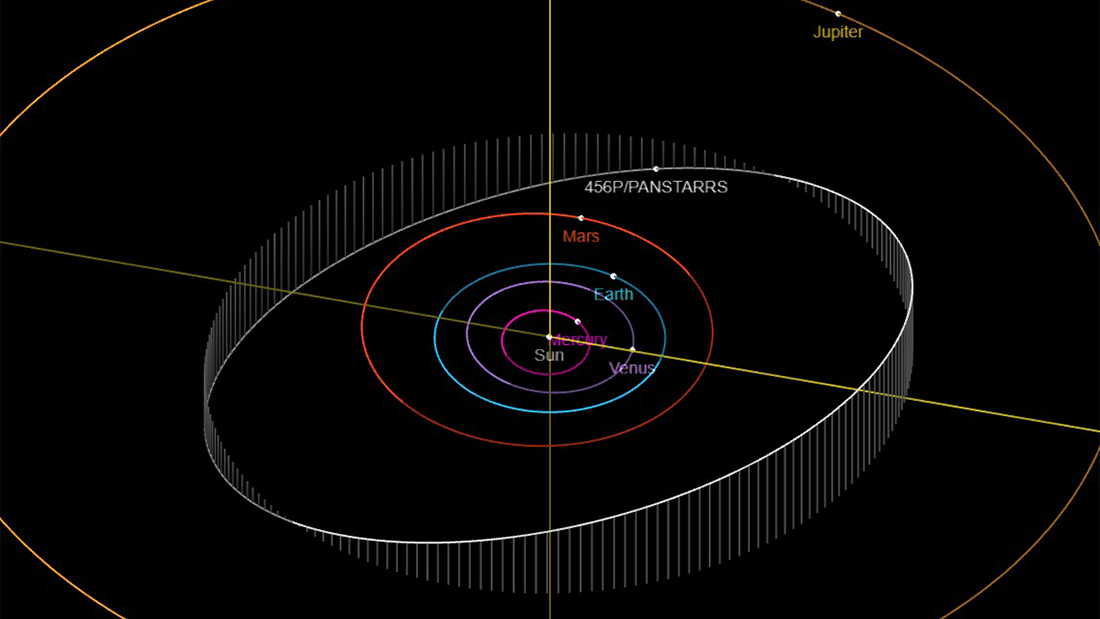The Solar System has a new confirmed comet, after repeated observations of candidate 456P/PANSTARRS showed it is an active, icy body.
The object, discovered in 2021 and given the temporary name 2021 L4, orbits between Mars and Jupiter in the main asteroid belt, taking 3,956 days (10.83 years) to do so. When it was first spotted by the Pan-STARRS observatory, it showed signs that it was outgassing, an unusual property for objects in the main belt.

456P/PANSTARRS’ orbit.
Image credit: NASA’s Small-Body Database Lookup
Comets are remnants of dust, ice, and rock left over from the formation of the Solar System, typically measuring 1 to 10 kilometers (0.6 to 6 miles) across, and generally going around the Sun on long orbits. They are much more easily spotted than asteroids due to their tails, which can stretch for tens of millions of kilometers.
As comets approach the Sun in their orbit and heat up, they outgas, losing gas and later (when they are even closer to the Sun) dust, which forms their distinctive trail or coma. This outgassing acts like a thruster, slightly altering the trajectory, rotation, and speed of the comet. This is termed “non-gravitational acceleration”, in that it is acceleration not produced by falling into the gravity well of objects in the Solar System.
Asteroids, meanwhile, are also rocky (and metallic) remnants from those early days of the Solar System, but do not have the ice of comets, nor their distinctive trails. They can range in size from about 530 kilometers (329 miles) in diameter to below 10 meters (33 feet) across, and are generally found on shorter orbits.
But distinctions between the two get murky, for instance with so-called “dark comets” showing characteristics of both.
Asteroids in the main belt can show activity that looks comet-like, with tails of ejected dust looking similar to comets’ distinctive comae. This could occur after an asteroid rotates quickly and results in the ejection, or following a collision.
Repeated observations of 456P/PANSTARRS, however, showed that its tail reoccurred as it moved closer to the Sun, and activity ceased as it moved away.
“This object is not just an asteroid that experienced a one-off event that caused it to show activity one time, but is an inherently active, icy body similar to other comets from the outer solar system,” Planetary Science Institute Senior Scientist Henry Hsieh explained in a statement.
“There are still very few confirmed main-belt comets known,” Hsieh added. “We want to build up the population so we can get a clearer idea of what their broader properties are – such as their sizes, activity duration and distribution within the asteroid belt, for example – so that they can be better used to trace ice in the Solar System in general.”
The study is published in Research Notes of the AAS.
Source Link: 456P/PANSTARRS: New Rare Comet Confirmed In The Main Asteroid Belt